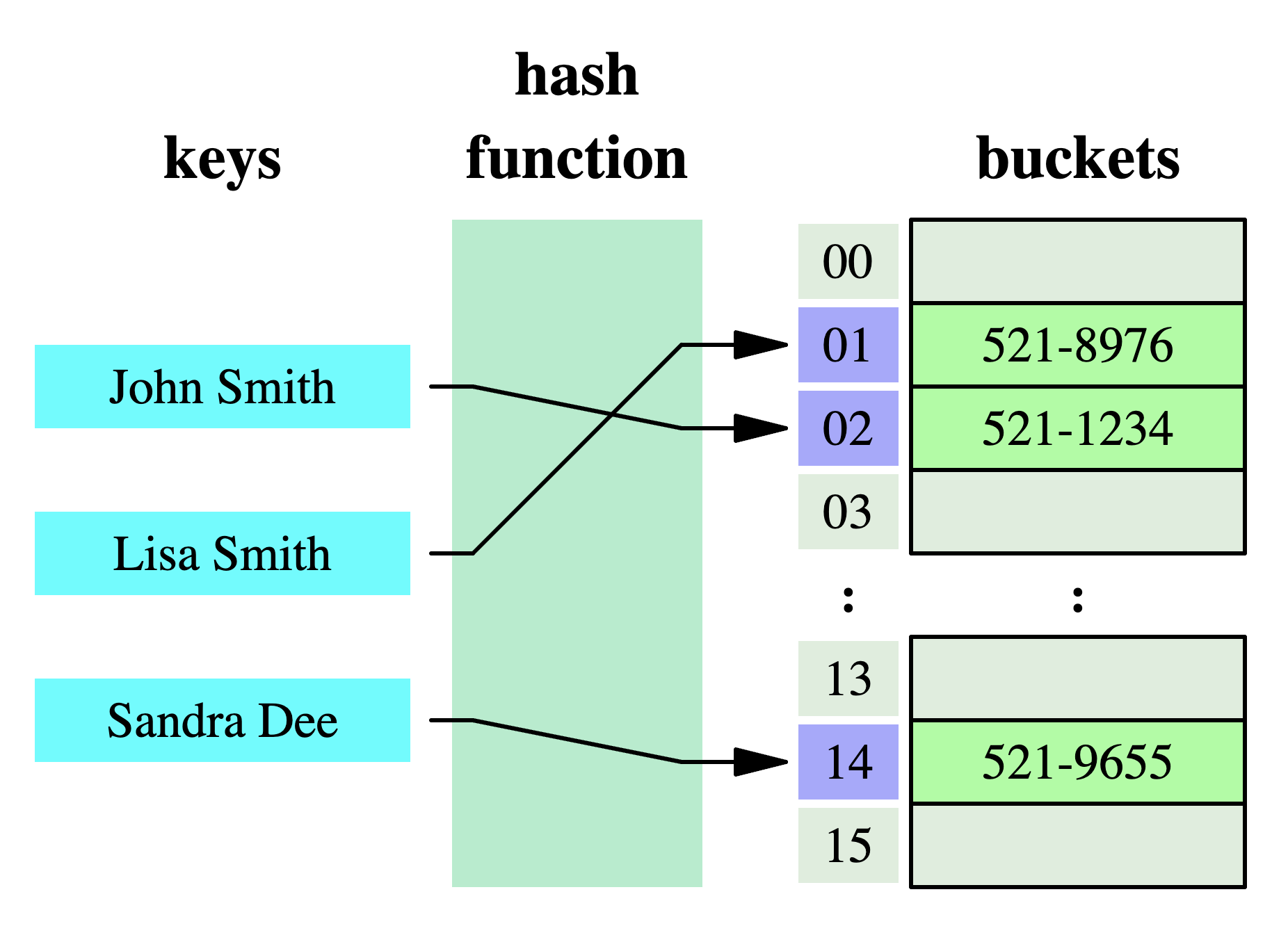6.1. Mapping About¶
How are dictionaries implemented in CPython? [1]
CPython's dictionaries are implemented as resizable hash tables. Compared to B-trees, this gives better performance for lookup (the most common operation by far) under most circumstances, and the implementation is simpler.
Dictionaries work by computing a hash code for each key stored in the
dictionary using the hash() built-in function. The hash code varies
widely depending on the key and a per-process seed; for example, "Python"
could hash to -539294296 while "python", a string that differs by a single
bit, could hash to 1142331976. The hash code is then used to calculate
a location in an internal array where the value will be stored. Assuming
that you're storing keys that all have different hash values, this means
that dictionaries take constant time – O(1), in Big-O notation – to retrieve
a key.

6.1.1. Scalar¶
Scalar
>>> 'Mark'
>>> 'Watney'
>>> 42
>>> 178.0
>>> 75.5
6.1.2. Value¶
Identifier + scalar = value
>>> firstname = 'Mark'
>>> lastname = 'Watney'
>>> age = 42
>>> height = 178.0
>>> weight = 75.5
6.1.3. Data¶
Value + relation = data
>>> astronaut = ('Mark', 'Watney', 42, 178.0, 75.5)
6.1.4. Information¶
Data + context = information
>>> astronaut = {
... 'firstname': 'Mark',
... 'lastname': 'Watney',
... 'age': 42,
... 'height': 178.0,
... 'weight': 75.5,
... }